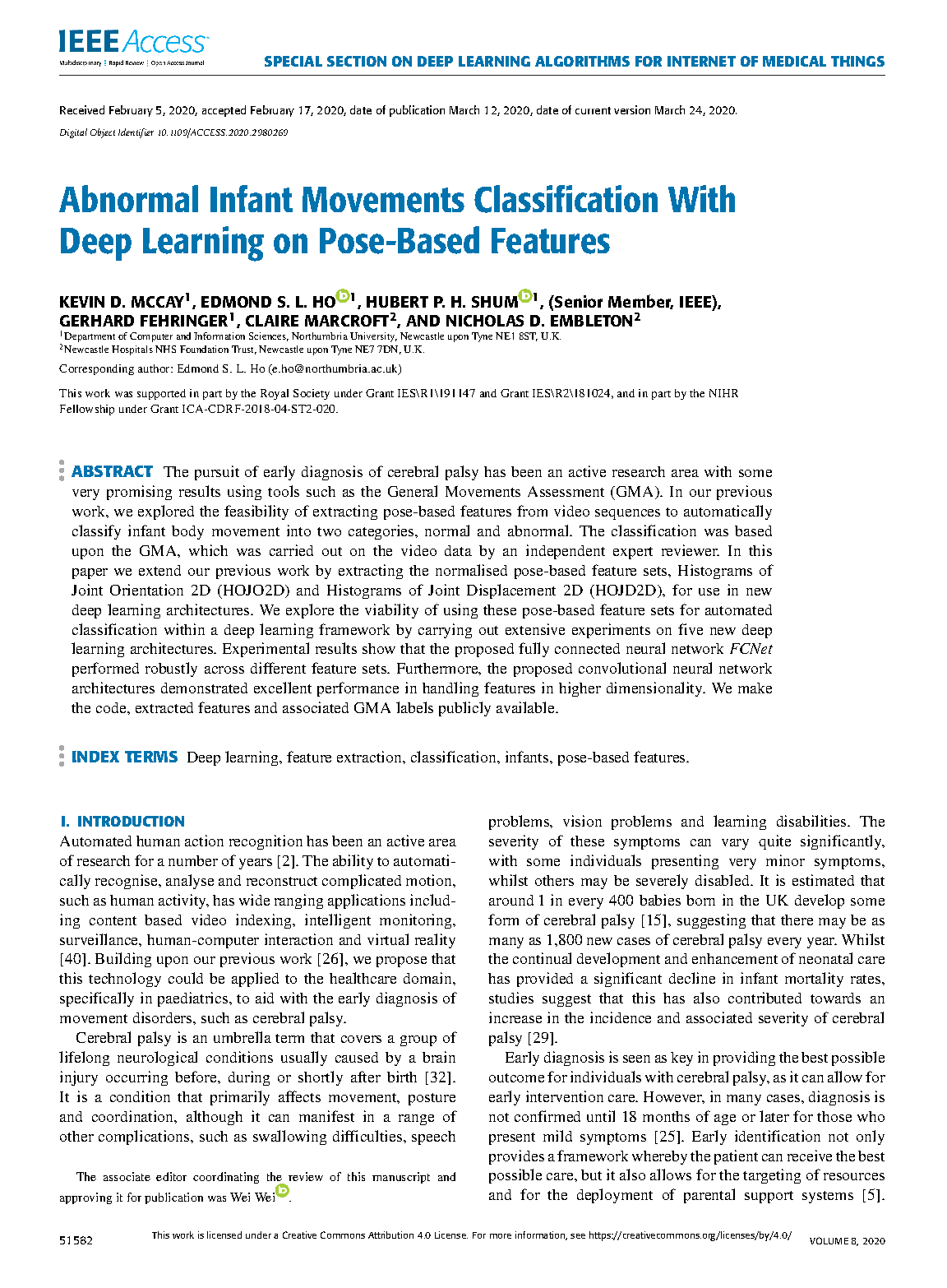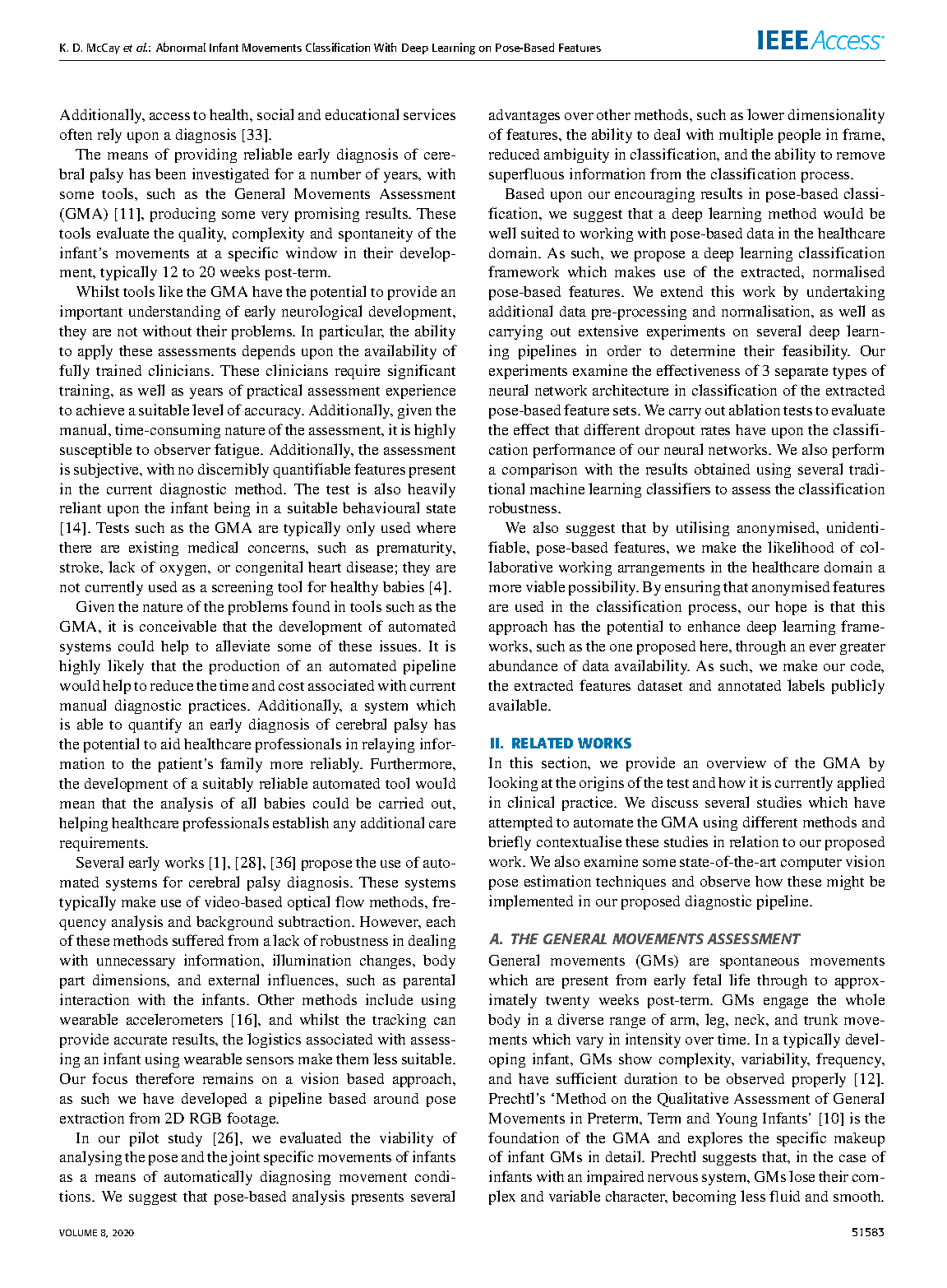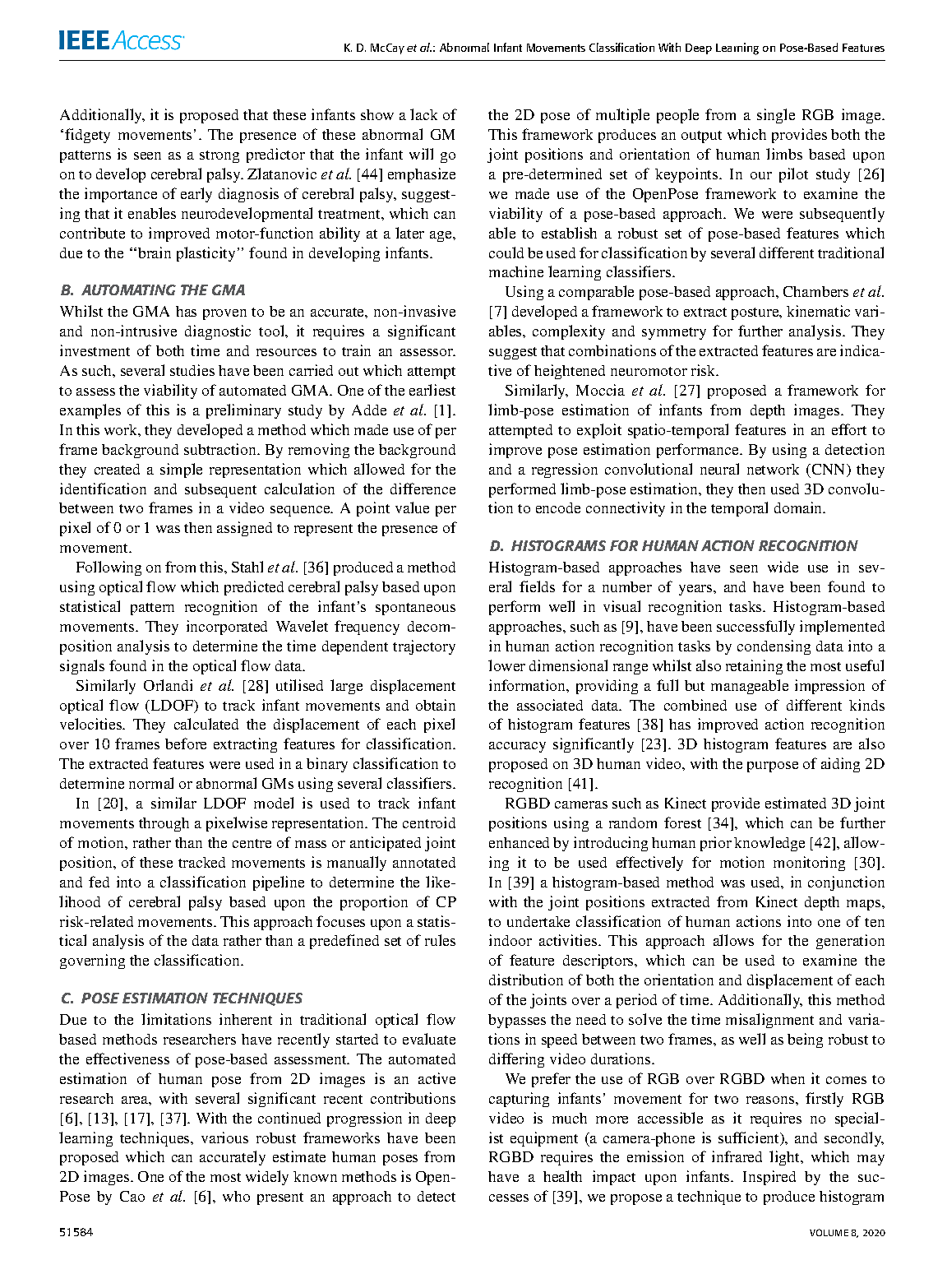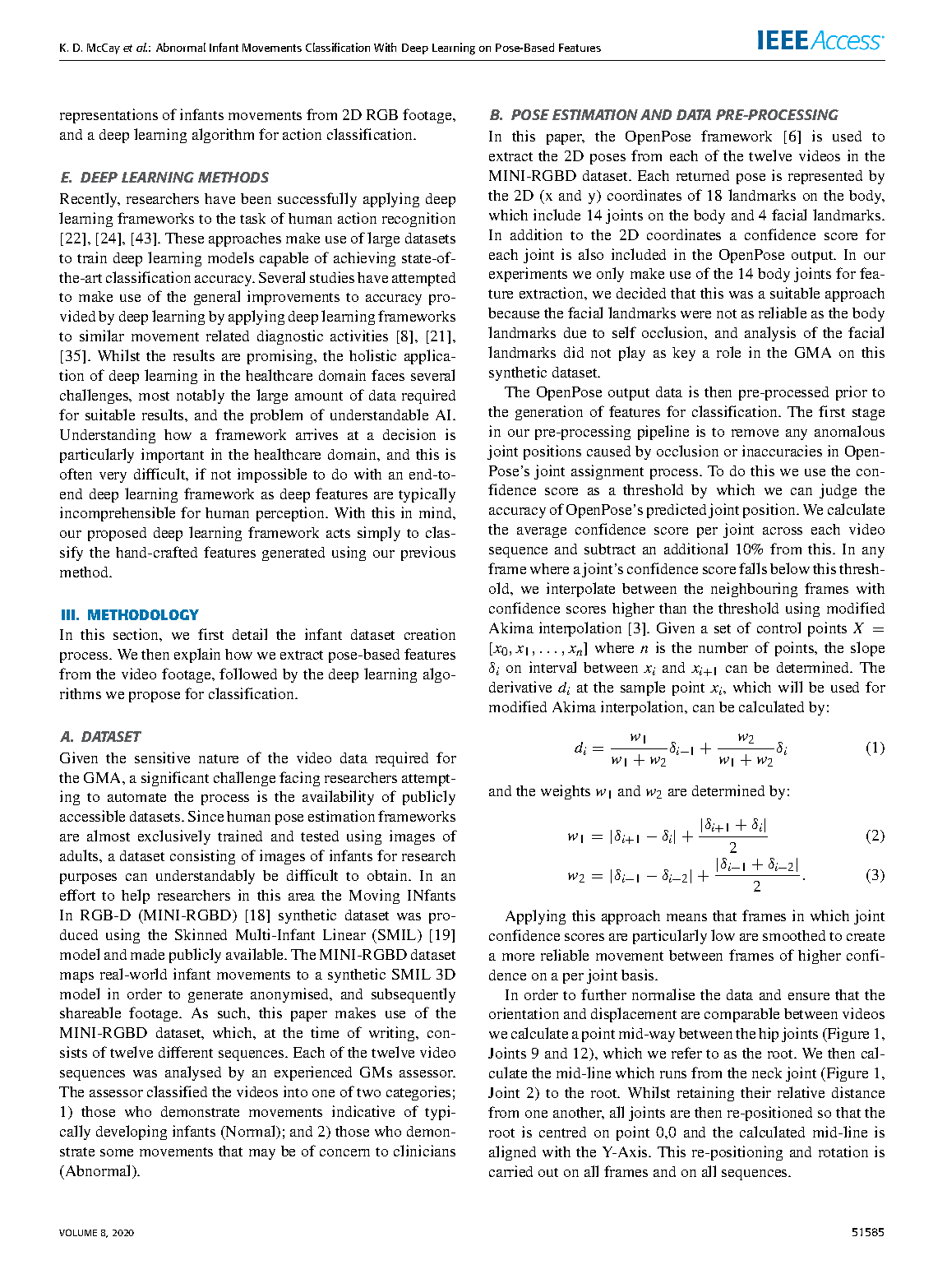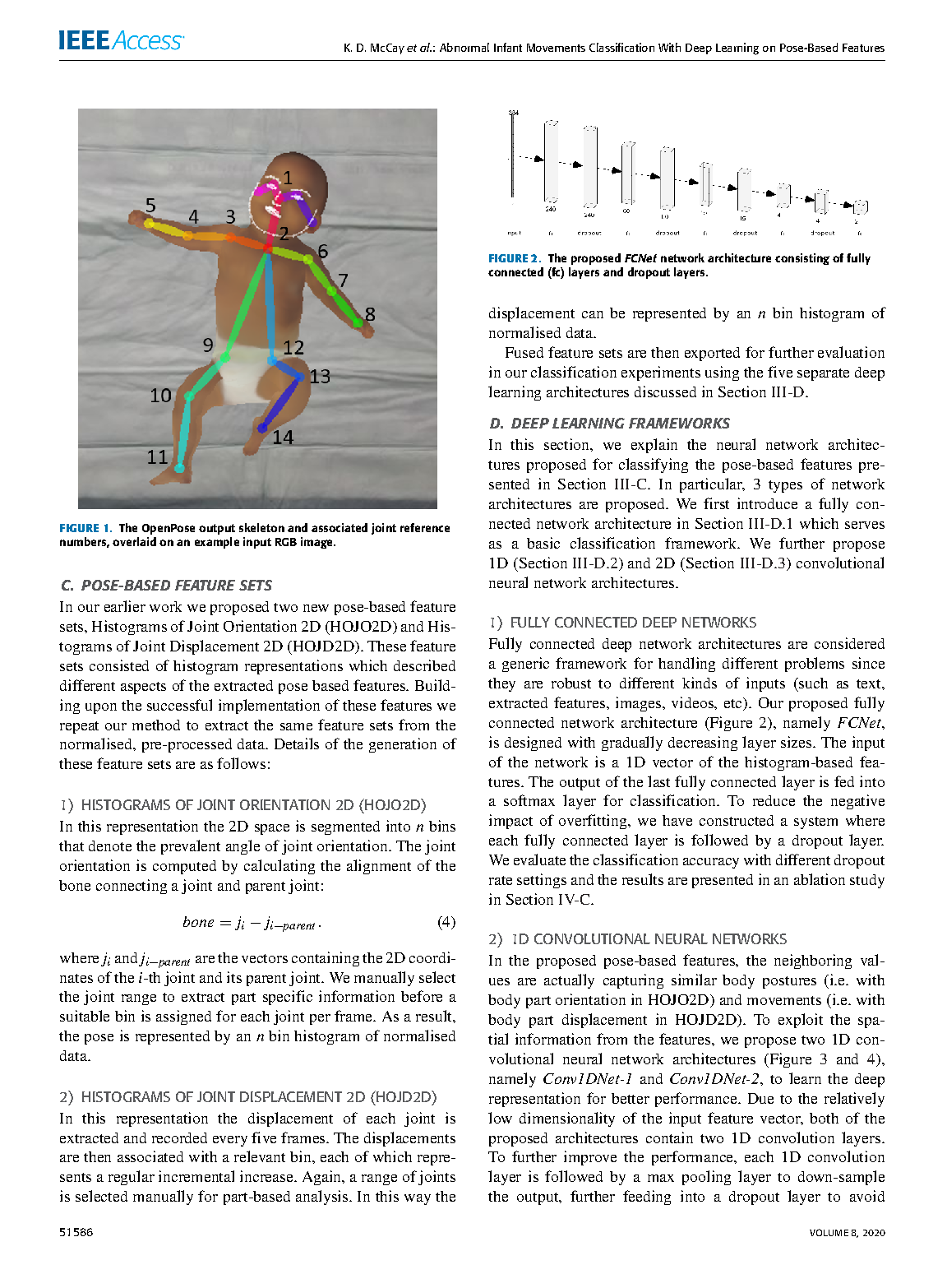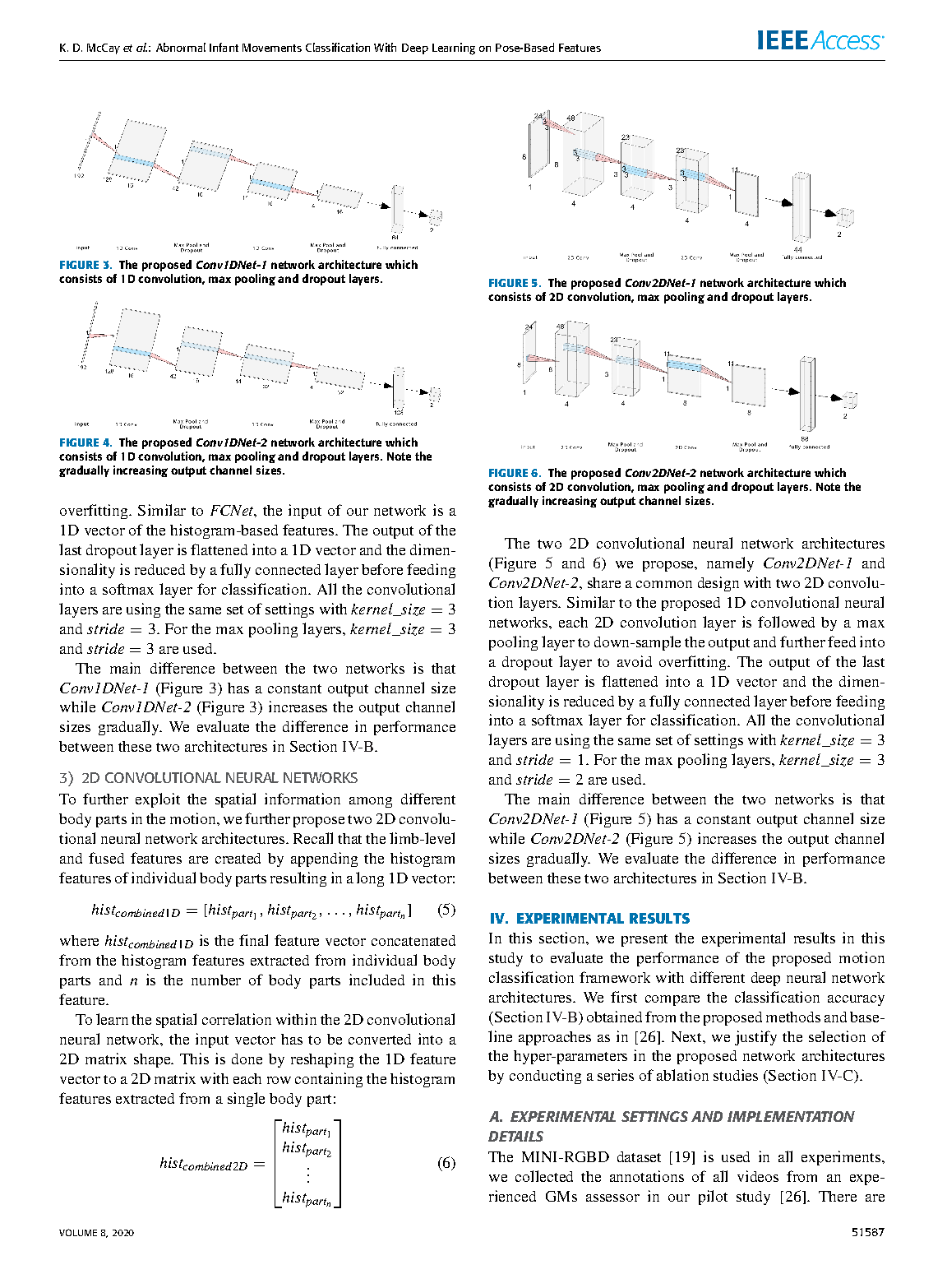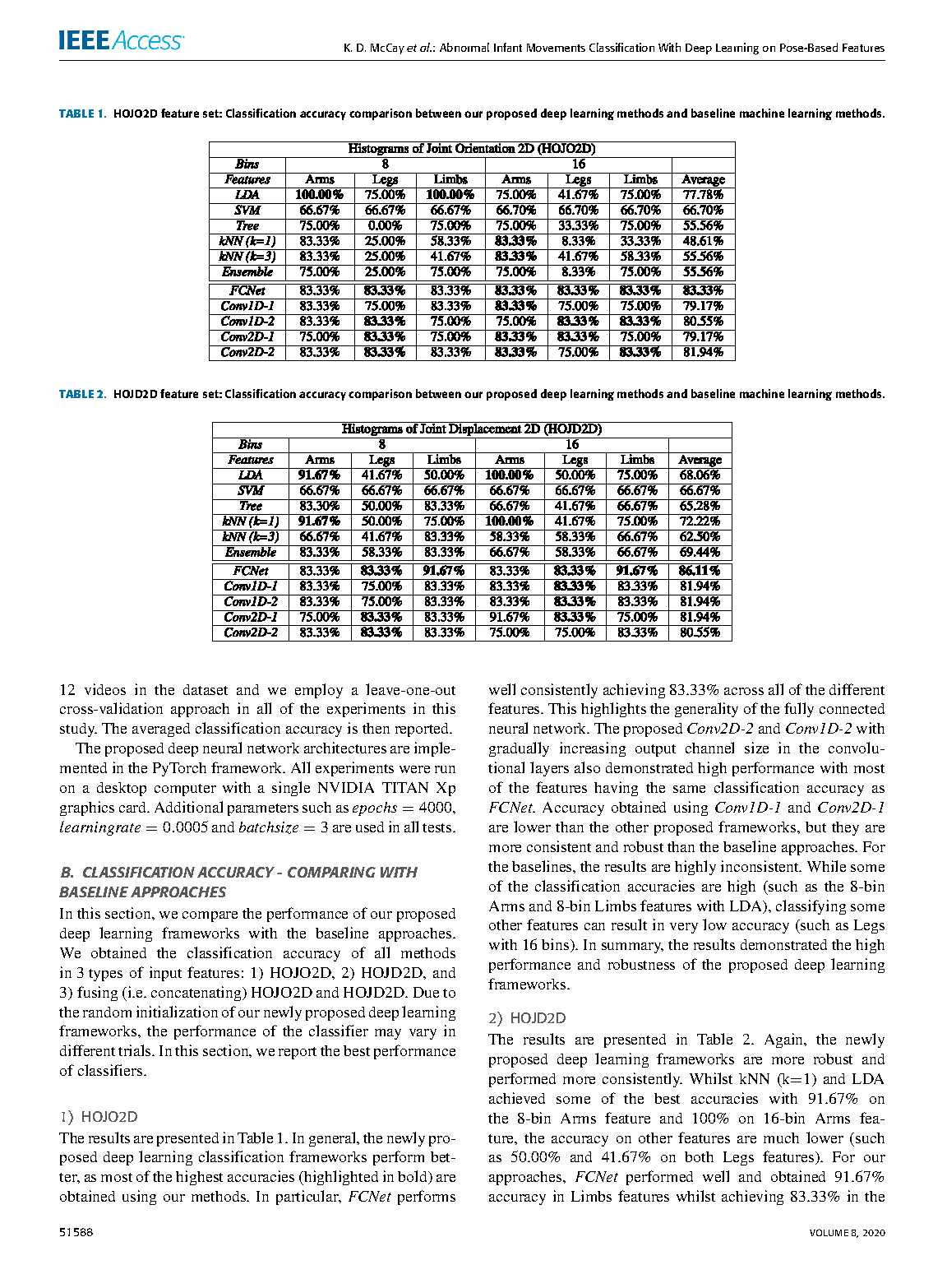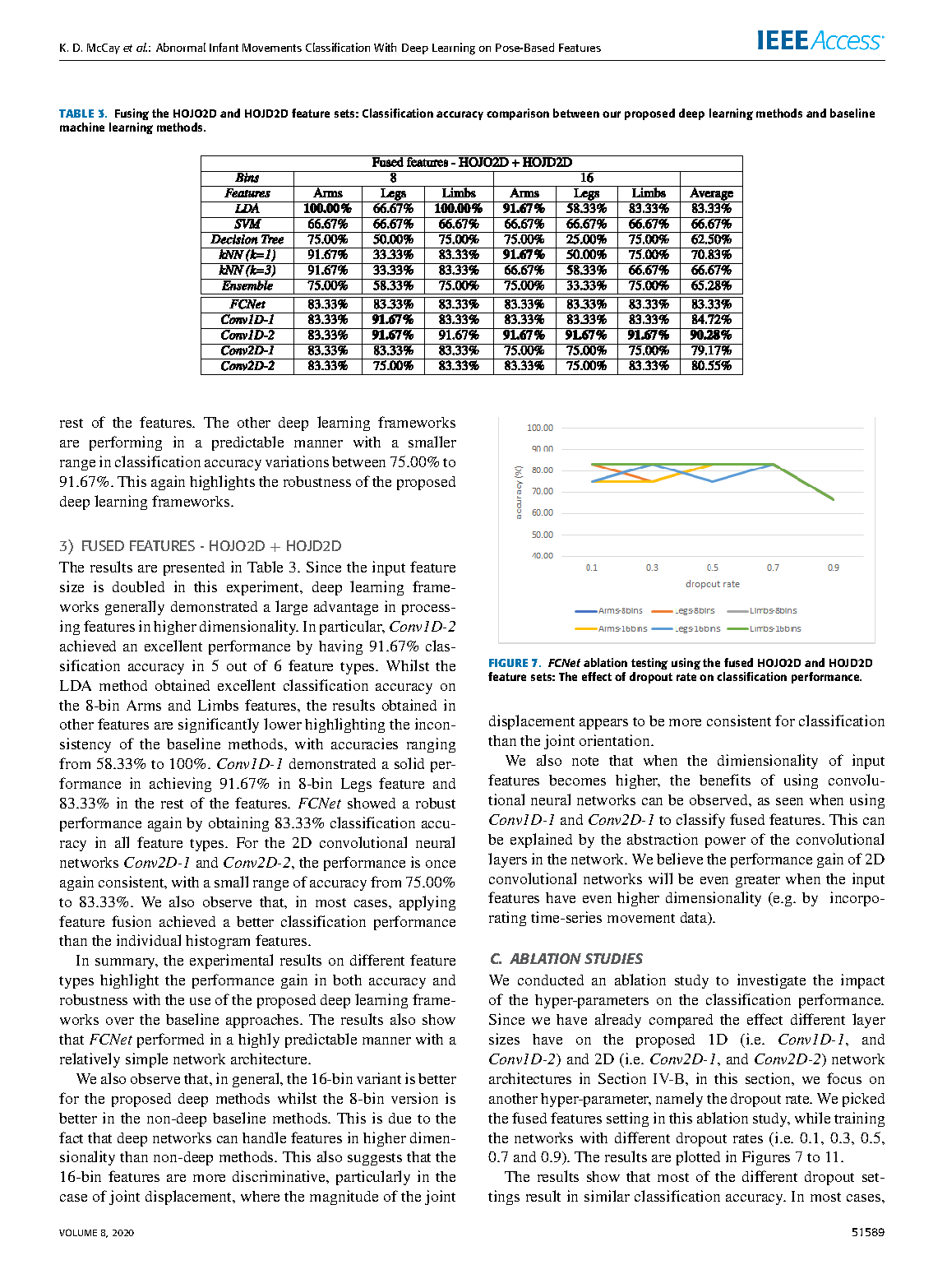Abnormal Infant Movements Classification with Deep Learning on Pose-based Features

Abstract
The pursuit of early diagnosis of cerebral palsy has been an active research area with some very promising results using tools such as the General Movements Assessment (GMA). In our previous work, we explored the feasibility of extracting pose-based features from video sequences to automatically classify infant body movement into two categories, normal and abnormal. The classification was based upon the GMA, which was carried out on the video data by an independent expert reviewer. In this paper we extend our previous work by extracting the normalised pose-based feature sets, Histograms of Joint Orientation 2D (HOJO2D) and Histograms of Joint Displacement 2D (HOJD2D), for use in new deep learning architectures. We explore the viability of using these pose-based feature sets for automated classification within a deep learning framework by carrying out extensive experiments on five new deep learning architectures. Experimental results show that the proposed fully connected neural network FCNet performed robustly across different feature sets. Furthermore, the proposed convolutional neural network architectures demonstrated excellent performance in handling features in higher dimensionality. We make the code, extracted features and associated GMA labels publicly available.
Publication
Kevin D. McCay, Edmond S. L. Ho, Hubert P. H. Shum, Gerhard Fehringer, Claire Marcroft and Nicholas Embleton,
"Abnormal Infant Movements Classification with Deep Learning on Pose-based Features",
IEEE Access, 2020
Links and Downloads
References
Last updated on 21 April 2022, RSS Feeds
